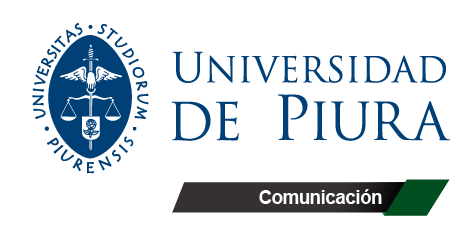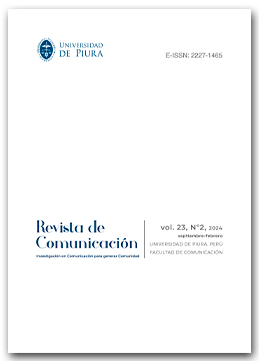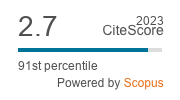El papel de los influencers en la comunicación de productos cruelty-free en Instagram: un estudio exploratorio sobre el impacto de la sostenibilidad en la industria de la belleza
DOI:
https://doi.org/10.26441/RC23.2-2024-3588Palabras clave:
Cruelty-free, Influencers, Instagram, Bienestar Animal, Sostenibilidad, Industria de la BellezaResumen
La creciente preocupación por el bienestar animal ha provocado en los consumidores un aumento del interés por los productos sostenibles. Como consecuencia, la industria de la belleza se encuentra cada vez más comprometida con los productos libres de crueldad animal o cruelty-free. Este cambio hacia un consumo ético y responsable se ha visto impulsado por el auge de las redes sociales y los influencers. En particular, plataformas como Instagram han desempeñado un papel relevante en la difusión de mensajes relacionados con la sostenibilidad a través de estos líderes de opinión. Para comprender cómo los influencers de belleza comunican los contenidos cruelty-free y cómo influyen estos mensajes en sus seguidores, se desarrolla una investigación que utiliza la triangulación metodológica. El diseño metodológico incluye un análisis de contenido, un cuestionario y entrevistas en profundidad. Los resultados del estudio indican que el esfuerzo comunicativo de los influencers beauty son limitados y no alcanzan un impacto significativo en la prescripción de productos cruelty-free. Las conclusiones recomiendan ampliar las estrategias de comunicación en otros medios digitales para incrementar el nivel de concienciación de la esfera pública para un cambio social sostenible.
Métricas
Citas
Abad, P. (2020, junio). El objetivo de la industria cosmética para 2030: el desarrollo sostenible. Vogue España. https://www.vogue.es/belleza/articulos/industria-cosmetica-desarrollo-sostenible
Al-Nuaimi, S. y Al‐Ghamdi, S. (2022). Sustainable Consumption and Education for Sustainability in Higher Education. Sustainability, 14(12), 1-17. https://doi.org/10.3390/su14127255
Bakshy, E., Hofman, J. M., Mason W. A., y Watts, D. J. (2011). Everyone's an influencer: quantifying influence on Twitter. Proceedings of the fourth ACM international conference on Web search and data mining, 65-74.
Boone, K., Kurtz, D. y Mackenzie, H.F. (2016). Contemporary Marketing. Nelson Education.
Borchers, N. y Enke, N. (2021). Managing strategic influencer communication: A systematic overview on emerging planning, organization, and controlling routines. Public Relations Review, 47(3). https://doi.org/10.1016/j.pubrev.2021.102041
Bussy-Socrate, H. y Sokolova, K. (2023). Sociomaterial influence on social media: exploring sexualised practices of influencers on Instagram. Information Technology & People, 37(1), 308-327. https://doi.org/10.1108/ITP-03-2022-0215
Casal, J. y Mateu, E. (2003). Tipos de muestreo. Rev. Epidem. Med. Prev, 1(1), 3-7.
Casaló, L., Flavián, C. y Ibáñez-Sánchez, S. (2018). Influencers on Instagram: Antecedents and consequences of opinion leadership. Journal of Business Research, 117, 510-519. https://doi.org/10.1016/j.jbusres.2018.07.005
Cecchini, L., Torquati, B. y Chiorri, M. (2018). Sustainable agri-food products: A review of consumer preference studies through experimental economics. Agricultural Economics, 64(12), 554-565. https://doi.org/10.17221/272/2017-AGRICECON
Choi, S. M. y Rifon, N. (2002). Antecedents and consequences of web advertising credibility: A study of consumer response to banner ads. Journal of Interactive Advertising, 3(1), 12-24. https://doi.org/10.1080/15252019.2002.10722064
Cornish, A. R., Briley, D., Wilson, B. J., Raubenheimer, D., Schlosberg, D. y McGreevy, P. D. (2020). The price of good welfare: Does informing consumers about what on-package labels mean for animal welfare influence their purchase intentions? Appetite, 148. https://doi.org/10.1016/j.appet.2019.104577
Cruelty-free International (2021). About Cruelty-free. Cruelty-free International. https://crueltyfreeinternational.org/about-cruelty-free-international
Davies, I. A. y Gutsche, S. (2016). Consumer motivations for mainstream “ethical” consumption", European Journal of Marketing, 50(7/8), 1326-1347. https://doi.org/10.1108/EJM-11-2015-0795
Davison, W. P. (1983). The third-person effect in comunication. Public Opinon Quarterly, 47, 1-15. https://doi.org/10.1086/268763
De Lenne, O., Vanhoffelen, G. y Vandenbosch, L. (2022). # BeautyInspo: Unraveling the Relationships Between Nonidealized Content on Different Media Platforms, Inspiration, and a Broad Conceptualization of Beauty. Cyberpsychology, Behavior, and Social Networking, 25(8), 481-488. https://doi.org/10.1089/cyber.2022.0016
De Veirman, M., Cauberghe, V. y Hudders, L. (2017). Marketing through Instagram influencers: the impact of number of followers and product divergence on brand attitude. International journal of advertising, 36(5), 798-828. https://doi.org/10.1080/02650487.2017.1348035
Deloitte (2022). The Deloitte Global 2022 Gen Z and Millennial Survey. https://bit.ly/3W1jYOl
Djafarova, E. y Matson, N. (2021). Credibility of digital influencers on YouTube and instagram. International Journal of Internet Marketing and Advertising, 15(2), 131-148. https://doi.org/10.1504/IJIMA.2021.114338
Eder, K. & Kousis, M. (2001). Environmental politics in Southern Europe: actors, institutions and discourses in a Europeanizing society. Springer Science & Business Media.
Fan, F., Chan, K., Wang, Y., Li, Y. y Prieler, M. (2023). How influencers’ social media posts have an influence on audience engagement among young consumers. Young Consumers, 24(4), 427-444. https://doi.org/10.1108/YC-08-2022-1588
Feng, Y., Chen, H. y Kong, Q. (2021). An expert with whom I can identify: The role of narratives in influencer marketing. International Journal of Advertising, 40(7), 972-993. https://doi.org/10.1080/02650487.2020.1824751
Fundación BBVA (2022). Visión y actitudes hacia los animales en la sociedad española. https://www.fbbva.es/wp-content/uploads/2022/01/Presentacion-Estudio-de-Animales.pdf
Gallagher, S. (2021). How influencer relations works. Journal of Professional Communication, 6(2), 37-61.
Gerrath, M. y Usrey, B. (2020). The impact of influencer motives and commonness perceptions on follower reactions toward incentivized reviews. International Journal of Research in Marketing, 38(3), 531-548. https://doi.org/10.1016/j.ijresmar.2020.09.010
Gilliland, N. (2019). How digital is shaping customer experiences in the beauty industry. Econsultancy. https://econsultancy.com/digital-customer-experience-trends-beauty-industry/
Giraldo-Patiño, C. L., Londoño-Cardozo, J., Micolta-Rivas, D. C. y O’neill-Marmolejo, E. (2021). Marketing sostenible y responsabilidad social organizacional: un camino hacia el desarrollo sostenible. Aibi Revista de investigación, administración e ingeniería, 9(1), 71-81. https://doi.org/10.15649/2346030X.978
Gloria Piña, A. (2021, mayo). Bienestar animal y objetivos de desarrollo sostenible, ¿cuál es su relación? Alianza Alimentaria. https://alianzaalimentaria.org/blog/bienestar-animal-y-objetivos-de-desarrollo-sostenible-cual-es-su-relacion
Gómez-Román, C., Lima, M. L., Seoane, G., Alzate, M., Dono, M. y Sabucedo, J. M. (2020). Testing Common Knowledge: Are Northern Europeans and Millennials More Concerned about the Environment? Sustainability, 13(1), 45. https://doi.org/10.3390/su13010045
González Romo, Z. F., García Medina, I. y Plaza Romero, N. (2017). Storytelling and social networking as tools for digital and mobile marketing of luxury fashion brands. Journal of Interactive Mobile Technologies, 11(6), 136-149. http://hdl.handle.net/10609/93113
Grunert, K. G., Hieke, S. y Wills, J. (2014). Sustainability labels on food products: Consumer motivation, understanding and use. Food Policy, 44, 177–189. https://doi.org/10.1016/j.foodpol.2013.12.001
Hassan, S. H., Teo, S. Z, Ramayah, T. y Al-Kumaim, N. H. (2021). The credibility of social media beauty gurus in young millennials’ cosmetic product choice. Plos one, 16(3), e0249286. https://doi.org/10.1371/journal.pone.0249286
Hennigs, N., Karampournioti, E. y Wiedmann, K. (2016). Do as you would be done by: the importance of animal welfare in the global beauty care industry. Green Fashion, 1, 109-125. https://doi.org/10.1007/978-981-10-0111-6_5
Horgan, R. y Gavinelli, A. (2006). The expanding role of animal welfare within EU legislation and beyond. Livestock Science, 103(3), 303-307. https://doi.org/10.1016/j.livsci.2006.05.019
IAB Spain (2023). Estudio de Redes Sociales 2023. https://iabspain.es/estudio/estudio-de-redes-sociales-2023/
Influencer MarketingHub (2022). The state of influencer marketing. https://influencermarketinghub.com/influencer-marketing-benchmark-report/
Insight (2021). The state of consumer spending: Gen Z influencing all generations to make sustaiability-first purchasing decisions. https://bit.ly/3z4symf
Istania, F., Pratiwi, I. P., Yasmine, M. F. y Ananda, A. S. (2019). Celebrities and celebgrams of cosmetics: The mediating effect of opinion leadership on the relationship between instagram profile and consumer behavioral intention. International Journal of Scientific and Technology Research, 8(8), 75-86.
Jarrar, Y., Awobamise, A. y Adebola, A. (2020). Effectiveness of Influencer Marketing vs Social Media Sponsored Advertising. Utopía y praxis latinoamericana: revista internacional de filosofía iberoamericana y teoría social, 12, 40-54. https://doi.org/10.5281/ZENODO.4280084
Jin, S. V. y Muqaddam, A. (2019). Product placement 2.0: “Do brands need influencers, or do influencers need brands?”. Journal of Brand Management, 26, 522-537. https://doi.org/10.1057/s41262-019-00151-z
Jungherr, A., Posegga, O. y An, J. (2019). Discursive power in contemporary media systems: A comparative framework. The International Journal of Press/Politics, 24(4), 404–425. https://doi.org/10.1177/1940161219841543
Kay, S., Mulcahy, R. y Parkinson, J. (2020). When less is more: the impact of macro and micro social media influencers’ disclosure. Journal of marketing management, 36(3-4), 248-278. https://doi.org/10.1080/0267257X.2020.1718740
Kim, J. & Kim, S. (2020). The impact of K-beauty social media influencers, sponsorship, and product exposure on consumer acceptance of new products. Fashion and Textiles, 7(1). https://doi.org/10.1186/s40691-020-00239-0
Kim, S. & Seock, Y.(2009). Impacts of health and environmental consciousness on young female consumers’ attitude towards and purchase of natural beauty products. International Journal of Consumer Studies, 33(6), 627–638. https://doi.org/10.1111/j.1470-6431.2009.00817.x
King, Chris (2023). Informe sobre las tendencias en redes sociales a escala global. HubSpot. https://bit.ly/3R1TbiL
Konstantopoulou, A., Rizomyliotis, I., Konstantoulaki, K. y Badahdah, R. (2019). Improving SMEs’ competitiveness with the use of Instagram influencer advertising and eWOM. International journal of organizational analysis, 27(2), 308-321. https://doi.org/10.1108/IJOA-04-2018-1406
Krippendorff, K. (2012). Content Analysis: An Introduction to Its Methodology. Sage Publications. https://doi.org/10.4135/9781071878781
Kucukusta, D., Perelygina, M. y Lam, W. S. (2019). CSR communication strategies and stakeholder engagement of upscale hotels in social media. International Journal of Contemporary Hospitality Management, 31(5), 2129-2148. https://doi.org/10.1108/IJCHM-06-2018-0484
Langer, A. I. y Gruber, J. B (2021). Political agenda setting in the hybrid media system: Why legacy media still matter a great deal. The International Journal of Press/Politics, 26(2), 313-340. https://doi.org/10.1177/1940161220925023
Lee, E. J., Bae, J. y Kim, K. H. (2020). The effect of environmental cues on the purchase intention of sustainable products. Journal of Business Research, 120, 425-433. https://doi.org/10.1016/j.jbusres.2019.10.048
Lee, H. y Kim, S. (2018). The influence of travel influencers on consumer decisions. Tourism Management, 39(2), 123-140. https://doi.org/10.1016/j.tourman.2018.04.001
Lee, J. A., Lee, S. Y., Ryoo, Y., Kim, W. y Sung, Y. (2022). The Psychological Consequences of Envying Influencers on Instagram. Cyberpsychology, Behavior, and Social Networking, 25(11), 703-708. https://doi.org/10.1089/cyber.2022.0001
López-Sáez, M., Martínez-Rubio, J. L. y Arias, A. V. (1997). El efecto tercera persona en la campana electoral. Analisis desde la perspectiva de la conformidad superior del yo The third-person effect in the electoral campaign. Revista de psicología social, 12(2), 153–166. https://doi.org/10.1174/021347497761111376
Lord, K. R. y Putrevu, S. (1993). Advertising and publicity: an information processing perspective. Journal of Economic Psychology, 14, 57–84. https://doi.org/10.1016/0167-4870(93)90040-R
Mañas-Viniegra, L., Núñez-Gómez, P. y Tur-Viñes, V. (2020). Neuromarketing as a strategic tool for predicting how Instagramers have an influence on the personal identity of adolescents and young people in Spain. Heliyon, 6(3). https://doi.org/10.1016/j.heliyon.2020.e03578
Martínez, A. (2023). La entrevista en profundidad y la observación directa: observaciones cualitativas para un enfoque holístico. En J.M. Moreno y J.M. Cortés (Coords.) Caminos de utopía: Las ciencias sociales en las nuevas sociedades inteligentes. UNO Editorial.
Martínez, R. y González, C. (2018). Brand Communication on Instagram, a Gender Issue? The Role of the Fashion Influencer. Masculinities & Social Change, 7(3), 230-254. http://dx.doi.org/10.17583/mcs.2018.3693
McCombs, M. (2006). Estableciendo la agencia. El impacto de los medios en la opinión pública y el conocimiento. Paidós.
Merck Group (2022). Sostenible o nada. El futuro que ambicionan los millennials y zeta europeos. https://www.merckgroup.com/es-es/pr/2022/Encuesta%20Europea%20segunda%20ola.pdf
Miele, M., Blokhuis, H., Bennett, R. y Bock, B. (2013). Changes in farming and in stakeholder concern for animal welfare. Improving farm animal welfare: Science and society working together: the Welfare Quality approach, 19-47.
Min, C., Lee, E. y Zhao, L. (2018). Mining Social Media Data to Discover Topics of Sustainability: The Case of Luxury Cosmetics Brands and Animal Testing. En C. K. Y. Lo y J. Ha-Brookshire (Eds.), Sustainability in Luxury Fashion Business. Springer Series in Fashion Business.
Munsch, A. (2021). Millennial and generation Z digital marketing communication and advertising effectiveness: A qualitative exploration. Journal of Global Scholars of Marketing Science, 31(1), 10-29. https://doi.org/10.1080/21639159.2020.1808812
NielsenIQ. (2023). Growing Sustainable Beauty Trends for Emerging Brands in 2023. https://nielseniq.com/global/en/insights/education/2023/sustainable-beauty-2023/
Nosto (2021). The future of beauty and skincare ecommerce. www.nosto.com/wp-content/uploads/beauty-skincare-consumer-report-2021.pdf
Pangaribuan, C. H., Ravenia, A. y Sitinjak, M. F. (2019). Beauty Influencer’s User-Generated Content On Instagram: Indonesian Millennials Context. Int’l J of Sci. & Tech. Res., 8(9), 1911-1917.
Pérez Curiel, C. & Sanz Marcos, P. (2019). Estrategia de marca, influencers y nuevos públicos en la comunicación de moda y lujo. Tendencia Gucci en Instagram. Prisma Social: revista de investigación social, (24), 1-24.
Pérez, M. y García, L. (2019). Influencers and sexual education: The impact on adolescents. Journal of Adolescent Health, 45(4), 789-805. https://doi.org/10.5678/jah.2019.45.4.789
Pilgrim, K. y Bohnet-Joschko, S. (2019). Selling health and happiness how influencers communicate on Instagram about dieting and exercise: mixed methods research. BMC public health, 19, 1-9.
Radin, S. (2020, junio). Everything To Know About Animal Testing In The Beauty Industry. British Vogue. https://www.vogue.co.uk/beauty/article/cruelty-free-beauty
Reynolds, T. J.; & Gutman, J. (1988). Laddering theory, method, analysis, and interpretation, Journal of Advertising Research, 28(1), 11-31.
Roca, M. (2014). La transformación de la industria publicitaria en la era digital. Percepciones de los profesionales en Estados Unidos: retos y oportunidades. Telos: Cuadernos de comunicación e innovación, 99, 64-74.
Rochford, E. (2021). Influencers and activists: Political performances in an increasingly online world. En W. J. Kahn (Ed.), Social media in the 21st century: Perspectives, Influences and Effects on Well-being. Nova Science Publishers.
Salam, M. T., Smith, K. T. y Mehboob, F. (2021). Purchase intention for green brands among Pakistani millennials. Social Responsibility Journal, 18(3), 469-483. https://doi.org/10.1108/SRJ-08-2020-0341
Schouten, A. P., Janssen, L. y Verspaget, M. (2020). Celebrity vs. influencer endorsements in advertising: The role of identification, credibility, and product-endorser fit. International Journal of Advertising, 39(2), 258–281. https://doi.org/10.1080/02650487.2019.1634898
Schroeder, B. (2019, noviembre). This Global Industry Will Be $390 Billion By 2024. Opportunities Abound to Offer Natural, Green and Organic Solutions. Forbes. https://bit.ly/3rl8gBC
Shahbaznezhad, H.; Dolan, R. y Rashidirad, M. (2021). The Role of Social Media Content Format and Platform in Users’ Engagement Behavior. Journal of Interactive Marketing, 53(1), 47–65. https://doi.org/10.1016/j.intmar.2020.05.001
Sidorenko P., Cabezuelo, F. y Herranz de la Casa, J. M. (2021) Instagram como herramienta digital para la comunicación y divulgación científica: el caso mexicano de @pictoline. Chasqui: Revista Latinoamericana de Comunicación, (147), 143-162. http://hdl.handle.net/10641/2919
Silva, A., Fonseca, M. J., Ribeiro, P., Castro, M. y Teixeira, A. (2021). Factors Influencing the Purchase Intention of Cruelty-free Cosmetics in Portuguese Consumers – An Exploratory Approach. En Á. Rocha, C. Ferrás, P. C. López-López y T. Guarda (Eds.), Information Technology and Systems. ICITS 2021. Advances in Intelligent Systems and Computing, 1331. Springer. https://doi.org/10.1007/978-3-030-68418-1_25
Singh, S. (2023). Cruelty-free Cosmetics Market. Market Research Future. https://www.marketresearchfuture.com/reports/cruelty-free-cosmetics-market-3825
Siti, A., Parashakti, R., Mahfud, I. y Adha, S. (2019). Online consumer review and beauty influencer on cosmetics purchase intention of indonesian female consumers. Journal of Business, Management, & Accounting, 1(1).
Smith, B. G., Golan, G. y Freberg, K. (2023). Influencer relations: Establishing the concept and process for public relations. Public Relations Review, 49(2), 102305. https://doi.org/10.1016/j.pubrev.2023.102305
Smith, J. y Johnson, A. (2020). The role of influencers in media literacy among youth. Journal of Media Studies, 15(3), 234-256. https://doi.org/10.1234/jms.v15i3.5678
Swani, K. y Labrecque, L. (2020). Like, Comment, or Share? Self-presentation vs. brand relationships as drivers of social media engagement choices. Marketing Letters, 31, 279-298. https://doi.org/10.1007/s11002-020-09518-8
Tafesse, W. y Wood, B. P. (2021). Followers’ engagement with instagram influencers: The role of influencers’ content and engagement strategy. Journal of Retailing and Consumer Services, 58, 102303. https://doi.org/10.1016/j.jretconser.2020.102303
Ting, C., Ganak, J., Summers, L., Adesanya, O., McCoy, L., Liu, H. y Tai, Y. (2021). Understanding Perceived Value and Purchase Intention toward Eco-Friendly Athleisure Apparel: Insights from U.S. Millennials. Sustainability, 13(14), 7946. https://doi.org/10.3390/SU13147946
Urban, K., Giesey, R. y Delost, G. (2022). A Guide to Informed Skincare: The Meaning of Clean, Natural, Organic, Vegan, and Cruelty-free. Journal of Drugs in Dermatology: JDD, 21(9), 1012-1013. https://doi.org/10.36849/JDD.6795
Villena-Alarcón, E. y Fernández-Torres, M. J. (2020). Relaciones con los públicos a través de Instagram: los influencers de belleza como caso de estudio. Revista Internacional de Relaciones Públicas, 10(19), 111-132. https://doi.org/10.5783/revrrpp.v10i19.641
Voorveld, H. (2019). Brand communication in social media: A research agenda. Journal of Advertising, 48(1), 14-26. https://doi.org/10.1080/00913367.2019.1588808
Watters, J. y Biernacki, P. (1989). Targeted sampling: Options for the study of hidden populations. Social Problems, 36(4), 416-430.
Weinswig, D. (5 de octubre de 2016). Influencers Are The New Brands. Forbes. https://www.forbes.com/sites/deborahweinswig/2016/10/05/influencers-are-the-new-brands/
Zhang, X. y Dong, F. (2020). Why do consumers make green purchase decisions? Insights from a systematic review. International journal of environmental research and public health, 17(18), 6607. https://doi.org/10.3390/ijerph17186607
Zhao, S., Grasmuck, S. y Martin, J. (2008). Identity construction on Facebook: digital empowerment in anchored relationships. Computer in Human Behavior, 24(5), 1816-1836. http://dx.doi.org/10.1016/j.chb.2008.02.012
Publicado
Cómo citar
Número
Sección
Licencia
Derechos de autor 2024 Revista de Comunicación

Esta obra está bajo una licencia internacional Creative Commons Atribución-NoComercial-SinDerivadas 4.0.











 Portal de Revistas de la Universidad de Piura.
Portal de Revistas de la Universidad de Piura.